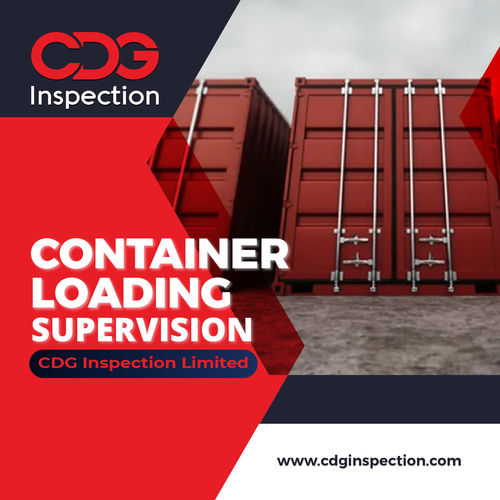Container Loading Supervision In Chennai
Product Details:
Product Description
During a Container Loading Check, your inspector will select boxes at random to confirm each carton bears the quantity of product ordered, the quality matches the specifications and or approved sample provided by you, and that all packaging material contains the correct barcodes, labeling, and packing materials. The entire container loading process is strictly supervised ensuring all product paid for makes it on the truck. ACLC reduces risk of damage during shipment. For all inspections, CDG uses the standard internationally recognized ANSI ASQC Z1.4 ISO 2859 1 statistical sampling procedure. These comprehensive criteria cover functionality, performance, durability, overall appearance, and dimension. Inspection certificates are issued if stipulated in the letter of credit. The CDG benefits, Independent quality control performed by product experts to protect your business interests. Global coverage across 85 countries in Asia, Africa, Europe, North and South America. Speed and flexibility with an inspector onsite within 48 hours modify or cancel up to the day before inspection Same day inspection reports tailored for your product. Online program management book inspections, make payments and download detailed reports. Custom quality dashboard to identify trends and make informed decisions in real time. Shipping Container Inspection Procedure Common Defects and Solutions, Avoid unforeseen cargo damage and product loss by using a container inspection procedure to check the quality of your containers when they are in your home town and overseas. It is great in theory. However, it is difficult to oversee several locations at once and ensure all defects are found. That is why it is important to have a container inspection procedure and checklist that everyone can follow. Importance of Checking, Common Defects of Shipping Containers and Solutions. A shipping container in bad condition can cause unforeseen losses. Damaged cargo and expensive repairs occur when you neglect your containers, which can suffer all kinds of damage during rough crossings and handling. Your containers should be regularly inspected, cleaned, and repaired to ensure the contents are properly protected .Bad odors, Problem, Odors present in the container before cargo is loaded stuffed can transfer to the products. The cause of the odor maybe from products previously transported in the container, or from lingering pungent chemical cleaning agents. Solution, Use biodegradable cleaning products that will not leave lingering odors. Thoroughly rinse the container after using cleaning agents. Air out the container after washing until it is dry and free of any odors. Stains Problem, Textiles can be easily stained by grease and dirt left from other products such as machinery previously transported in the container. Solution. Do not repurpose containers that have been used to transport greasy or oily products. Use tough cleaning agents to get rid of the stains. Holes in container sides Problem, Holes in container ceilings, floors, and walls can let in water and dust. Holes can occur as a result of dents and damage to surfaces caused during shipping and handling of the container. Solution, Regularly check the interior of containers for light leaks indicating holes. Check the exterior of the containers for erosion and dents or damage to the paintwork. Spotting defects early on reduces repair costs. Erosion can be prevented by applying a new coat of weather proof paint to the affected area. Large holes need to be patched up with welding equipment. Damaged floorboards Problem, Wooden floorboards degrade over time, becoming uneven and loose. Floorboards also splinter and eventually break apart from repeated stuffing and un stuffing of cargo. Solution, Regularly inspect the condition of the floorboards and make necessary repairs. Sand down splintered floorboards. A durable weather proof coating can be applied as a preventative measure. Replace loose or broken floor boards. Mold Problem, Dampness and humidity promote mold growth, especially on the floorboards, which can contaminate cargo and produce a bad odor. Solution, Regularly spray container interiors with industrial anti bacterial disinfectants and air out the containers to eliminate dampness and prevent mold growth. CIL Provides Accredited Container Loading Supervision in Chennai , Tamil Nadu , India. CIL is an ISO 17020 accredited inspection body for Container Loading Supervision.
Product details
| Service Type | Container Loading Supervision |
| Issue To Be Inspected | Quantity |
| Inspection Service For | Container |
| Industry Type | Any |
| Usage/Application | Any |
| Mode Of Report | Soft Copy |
| Service Mode | offline |






